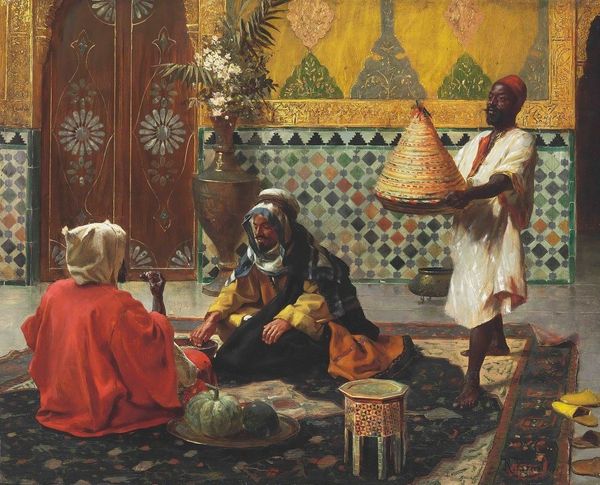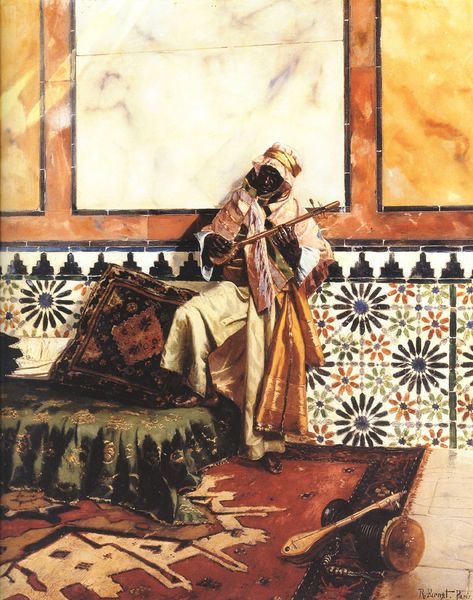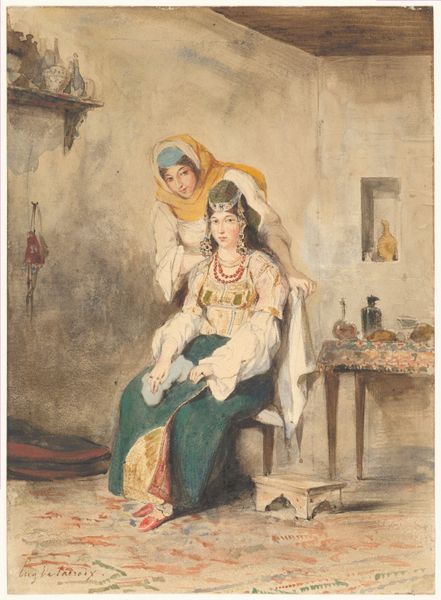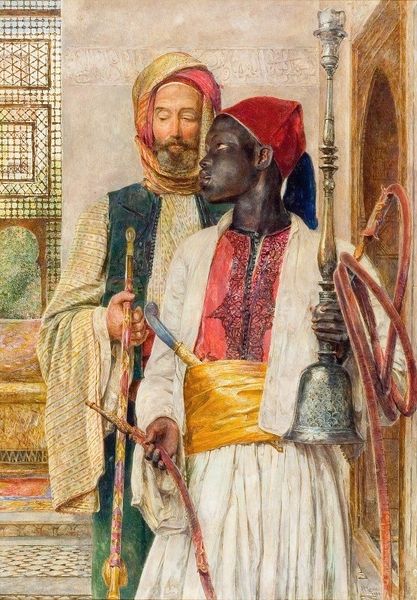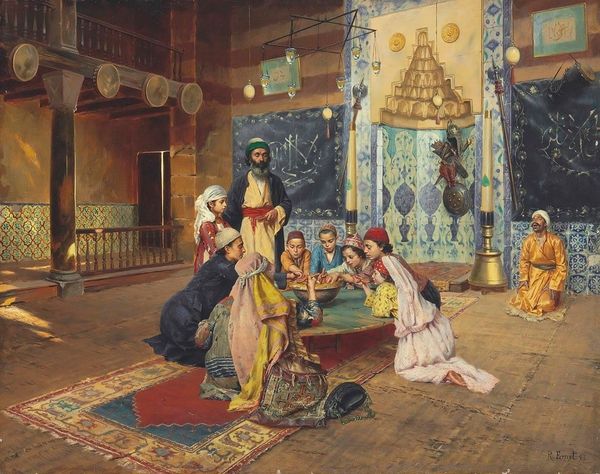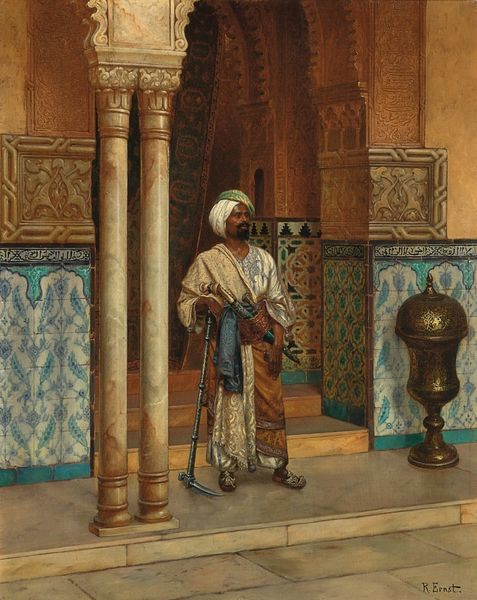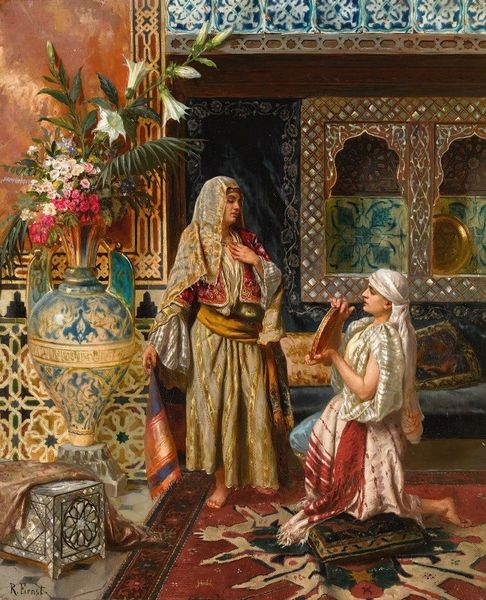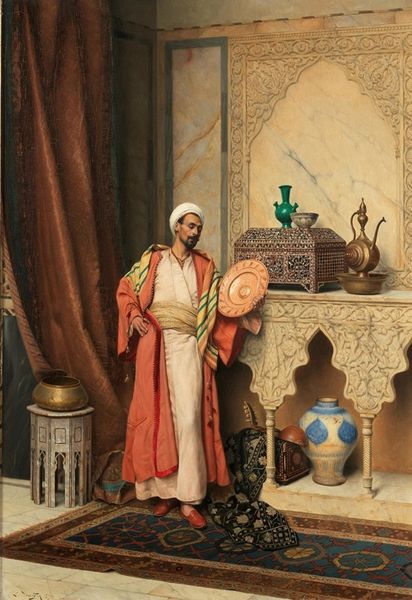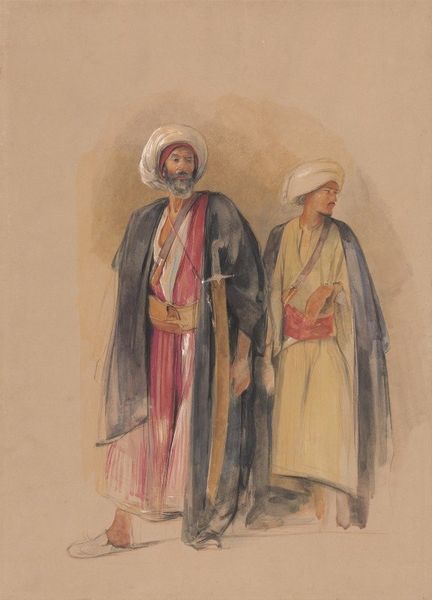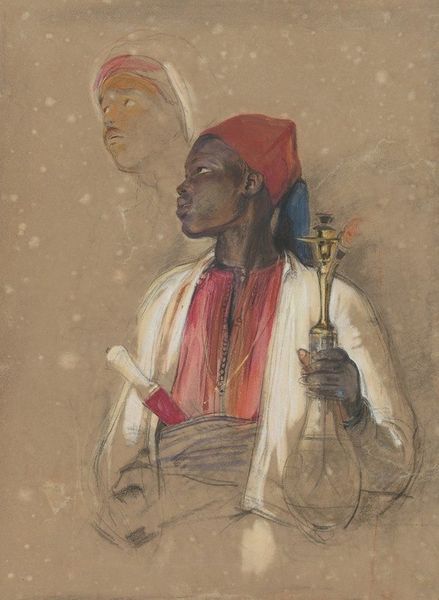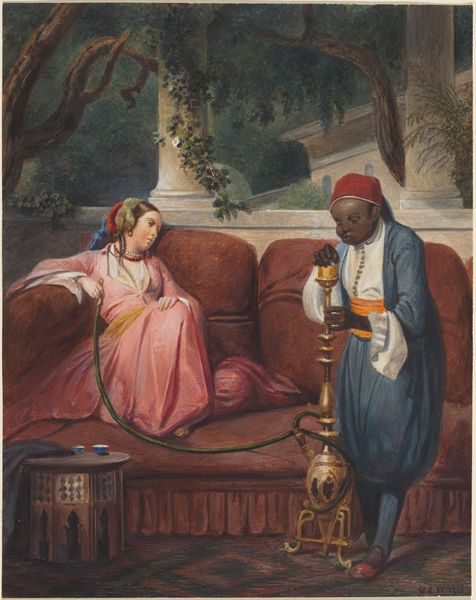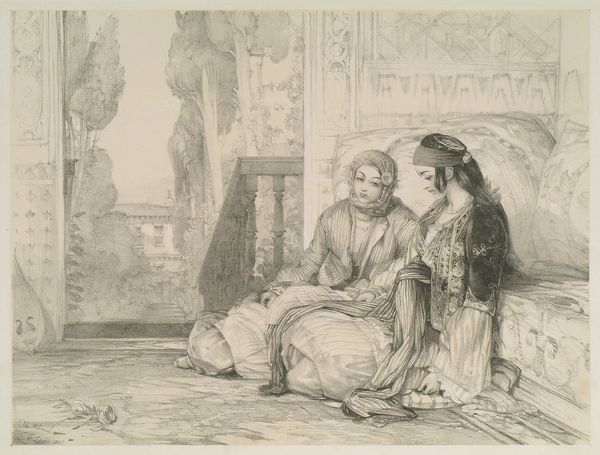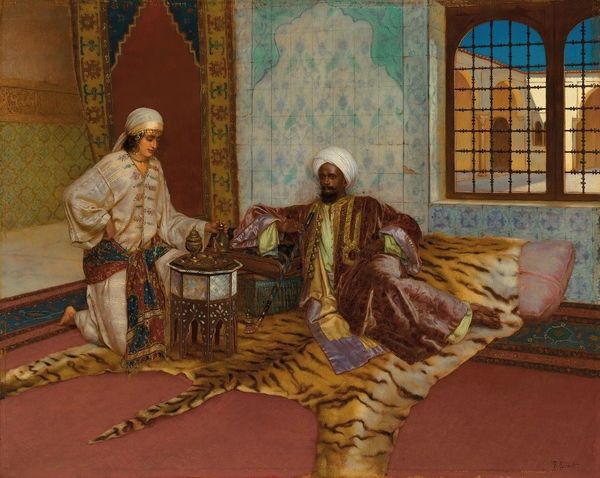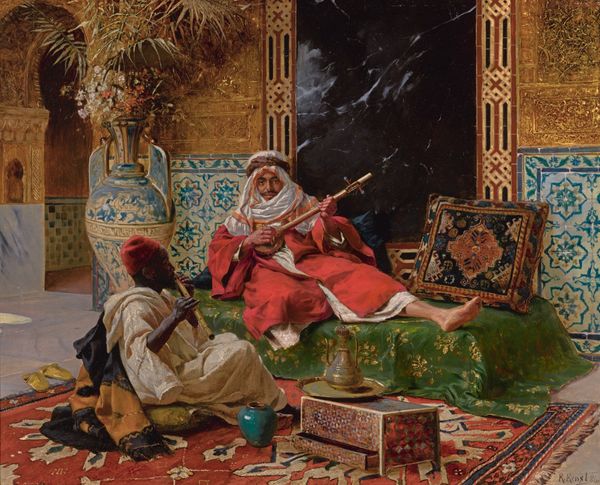
painting, watercolor
#
portrait
#
figurative
#
painting
#
oil painting
#
watercolor
#
romanticism
#
orientalism
#
genre-painting
#
watercolor
Copyright: Public Domain: Artvee
Curator: Immediately, I’m struck by the light, almost dreamlike quality. It’s all hazy edges and subtle washes of color. Editor: Precisely, it’s quite the hallmark of John Frederick Lewis. The piece, dating to around 1848, is titled “Iskander Bey and his Servant”. It's watercolor and gouache on paper. Curator: Iskander, I’m assuming, is the child, looking quite pale and Western European, posed rather languidly. There’s a sort of… unease to it all, even though it's beautiful. Editor: And that unease, I think, is very much tied to its context. This falls squarely into the genre of Orientalism, which as we know, is rife with power dynamics and constructed fantasies. The boy’s attire, the Black servant holding a feathery plume… everything is carefully positioned to evoke a certain idea of the ‘exotic’ East. Curator: Yes, and the composition is interesting. The detailed rug beneath versus the flat, patterned background…It creates a sense of depth while simultaneously flattening the image. It’s like Lewis wants to give us a peek, but also keep us at a distance. Editor: Indeed. And it begs the question: What audience was this intended for? The Orientalist style was largely consumed by European audiences, who reveled in what they believed to be an accurate representation of “Eastern” cultures. It's filled with inaccuracies of course, fantasies meant to uphold a sense of Western superiority. Curator: It feels staged. You sense it's very far from reality. Editor: Exactly. The opulence, the accoutrements… it's less about truthfully portraying a culture, and more about creating an opulent fantasy, one that reaffirms prevailing Western biases. This imagined, staged "reality" is precisely what allowed such tropes and power dynamics to be sustained. It’s critical to recognize and confront such works within their historical and social context. Curator: So while the artistic skill is undeniable, and the piece possesses a certain melancholic beauty… Editor: …we must also engage critically with the problematic elements inherent in its representation, and the colonial gaze embedded within it. It is a visually appealing representation that is ultimately an artificial construction that reveals much more about Europe, than the people, culture and locations it attempts to represent.
Comments
No comments
Be the first to comment and join the conversation on the ultimate creative platform.
